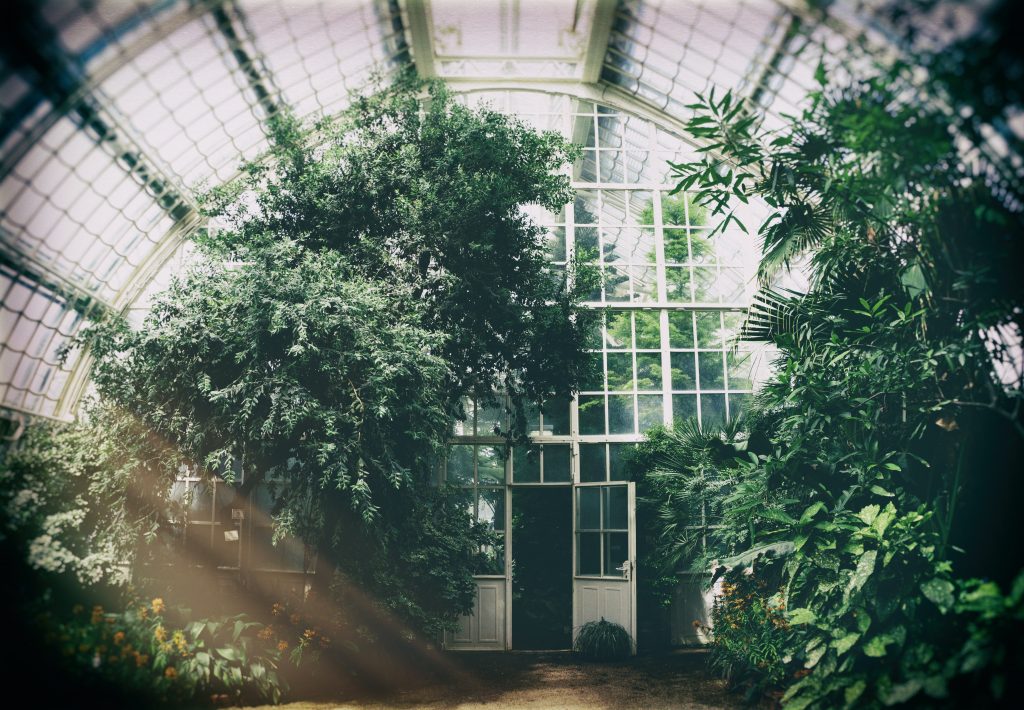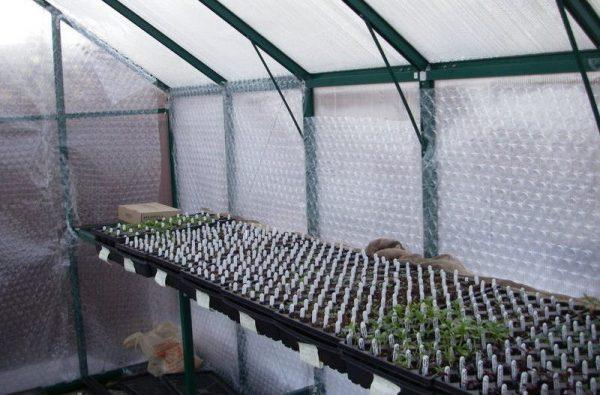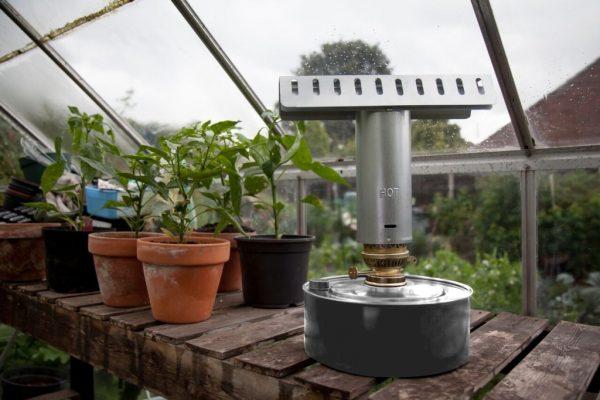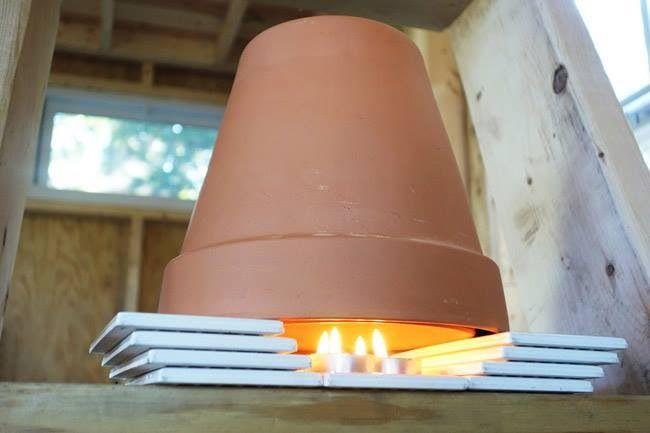Maintaining a greenhouse is pretty hard and costly, and during the cold seasons, you need to give every bit of effort to make sure it runs properly. But, a greenhouse also comes with lots of work and a huge electricity bill if it is heated with electrical equipment.
Now, whether your greenhouse is small in size or a big one, you need to keep it heated in the winter and throughout the season. So, you need to have good knowledge about how to heat a greenhouse without electricity.
How to Heat a Greenhouse Without Electricity – 15 Tricks to Follow

We all know that we can easily use electronic equipment in greenhouse heating systems. But, there could be so many reasons why we would not want to heat it with electricity.
Electrical equipment is not cheap, and even if we manage the electric heaters and other equipment, we need to pay a really handsome amount per month as our electricity bill. To avoid this and save money, you can follow some tricks on how you can heat your greenhouse without electricity.
Below are 15 tricks on greenhouse heating systems.
1. Use 2 Greenhouses
In this method, you can save lots of energy by recycling the same heat within two greenhouses. You can build a smaller greenhouse inside your normal-sized greenhouse. Make sure they are not exposed to any other elements like outside water or temperature.
You can plant smaller, more sensitive trees in the smaller house. On the other hand, you can plant some relatively big plants that can survive in less temperature than the smaller ones. This method will require less heat to operate. Therefore, you will spend less effort and energy to heat them up.
2. Seal The Gaps
Check the frame of the greenhouse thoroughly. Like in any frame in any structure, there will be some gaps within the fame and also from the frame to the surface. You need to seal all of these gaps carefully. You can use adhesive tape to seal any gap in the structure.
Sealing the gap will result in no air getting inside it, therefore the air will get stuck inside the greenhouse and this will keep the temperature high.
3. Insulate with Bubble Wrap

This is another thing you can do to not only provide better heat but also to provide better light into the greenhouse. You can insulate the whole unit with agricultural or horticultural bubble wrap.
Bubble wrap usually gives better light flow than many other materials. Also, it is stable in UV. While it may not look like it, but it is a durable material, and lasts 3 years on average.
Cut the bubble wrap by the size you need. Measure the walls, the sides, and everything, and then cut and insulate the entire thing with bubble wrap. It is one of the easiest ways to create a self-heating greenhouse.
While the bubbles of the bubble wrap pass light at a good rate, the air trapped in the bubble acts as a great insulator and prevents any kind of sudden temperature change.
4. Use Compost
Compost is useful for so many things and in this case, generating heat in the greenhouse.
Materials:
- Wire Mesh
- Hay or leaves or plant parts
You can do almost any organic thing in this compost formula. Lay down the wire mesh in the center of the greenhouse, and then place your compost on it. There are micro breakdowns happening at compost, and it releases heat inside the greenhouse.
5. Build a Brick Wall
Usually, brick or rock walls store heat within them. You can use walls to keep heat in the greenhouse.
In the inside of the greenhouse, build the brick wall in the opposite direction of the sun so that it gets direct sunlight. Now, there are two options available for paint. If you paint it white, there will be more light reflected around the unit. But, if you paint it black, it will absorb the heat and thus the inner temperature of the house will remain high.
You can also give a layer of gravel or small stones to the wall for better heating capacity.
6. Paraffin Heaters

This is one of the cheapest ways to heat a greenhouse without electricity.
Paraffin heaters run using fuel and this option is less expensive than electricity. Moreover, these heaters generate Co2 and the photosynthesis process of plants relies a lot on Co2 gas.
The most essential thing that needs to keep in mind when using this method is, adequate ventilation is a must. This is because more buildup of Co2 and humidity may happen if you don’t ensure a proper ventilation system and thus your plant’s damage soon.
7. Use Painted Plastic Gallon
Materials:
- Plastic Gallon
- Black paint
Applying this process is very easy. Get the plastic gallon and paint the whole thing, Black. This black or deep color absorbs so much heat that it acts as heat storage.
Place the black painted plastic gallon in the corners of the greenhouse. Just make sure the plants are getting their required amount of sunlight.
8. Use Manure Crates in Greenhouse
When manure crates are placed in a greenhouse, they act similar to the compost method and generate heat. You need to place these manure crates strategically to properly spread the heat released by them.
9. Separate the Plants
In many cases, there are two major kinds of plants in the same area – the warm lover ones and the cold-loving ones. You need to separate the plants into two areas in the same greenhouse to keep the warm loving plants safe, healthy, and heated. You can even give any kind of barrier between the two areas.
10. Build Attached Greenhouse
To reduce the heating cost, you can build your greenhouse attached to something like your house or like a chicken farm. When it is attached to something like a chicken coop, it will get all the heat it needs from the chickens.
11. Place Animals Inside the Greenhouse
If your greenhouse is big in size, you can place live animals inside it. You can place animals like rabbits into the system. The body heat from these animals will keep the whole unit warm. Also, their wastes will also generate more heat for the greenhouse to utilize.
12. Heat greenhouse with candles

You can put several burning candles in your greenhouse. Though candles produce a little bit of heat when you place them in their right places and those will heat up the greenhouse.
13. Heated Beds
When using the techniques described above, to keep the greenhouse warm, power-free heated beds need to be used. Roof walls and garden beds are the best areas for using heated beds. This way, tropical temperature is maintained for the best growth of your plants.
Don’t hesitate to use this method because it is cost-efficient and energy-saving too. Overall, no impact will come in the ecosystem.
14. Earthworms
You might be wondering; how can these tiny creatures play a role to keep the greenhouse heated?
The truth is earthworms are one of the best friends of farmers. They emit Co2, No2 along with other greenhouse gases. Combining all these gases keeps the greenhouse heated.
15. Increase Humidity
Humidity plays one of the key roles in maintaining greenhouse temperature. Due to this, energy gets trapped in the daylight and emitted at night.
Installing a humidifier or dampening the greenhouse will help you to increase the humidity level.
However, when increasing the humidity, make sure not to increase it too much because it may harm your plants. So, when you follow this method, regular ventilation is necessary.
What is the Cheapest Way to heat a greenhouse without electricity?
There are so many methods that are discussed above. Among all of these, there is one method that is truly money efficient.
The cheapest way to heat a greenhouse is using compost. You can literally use hay, the cutaway pieces of plants, leaves, and all these kinds of organic trash to create compost and then place it in the greenhouse.
Greenhouse heating systems may differ from one another, but these tricks and easy methods really work and reduce the cost while maintaining the heat.
Wrap Up
A greenhouse needs to be kept heated, and in most cases, they are heated by electricity. But, once you know about how to heat a greenhouse without electricity, you would not buy electrical heating equipment and spend money on the bill. Hopefully, this article came of some use and benefit for you, and your greenhouse.

